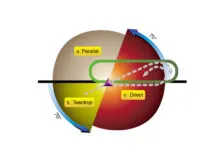Here’s one of those questions that has a simple answer masking hidden subtleties: You’re on the approach to Orlando Executive with the family for a couple well-earned days in The Land of the Mouse. You loved the idea of flying in to Executive rather than putting the family in seats 27 A through D into nearby Orlando International.
But now the reality of getting established on a back-course localizer in bumpy clouds has you behind the curve and working hard to meet the mandatory altitudes on the stepdowns. You barely made the restriction to cross
MARYB at 1500 and now are at 1100 heading for BRICE, struggling with reverse sensing and losing. You decide it’s best to go missed now and start again. But, how to do it?
By the Book, with Limits
AIM 5-4-21 spells out generally what to do by saying, “When an early missed approach is executed, pilots should, unless otherwise cleared by ATC, fly the IAP as specified on the approach plate to the missed approach point at or above the MDA or DH before executing a turning maneuver.”
Great. You’ve got to keep working that back course while cleaning up and climbing (seat 27A is looking better every minute). But this missed has a published maximum altitude for the missed approach of 1500 feet. That’s unusual, and the reason is the same as the mandatory crossing altitudes at MARYB and BRICE: You’re passing under arrivals for Runways 17 and 18 at Orlando International, about six miles south.
So you climb to 1500 but radio traffic is busy and you can’t get a word in yet. But at least the 1500-foot level-off keeps you clear of jet traffic crossing overhead.
Or does it? Orlando Executive is directly beneath the FAF (called TUFFE) for the RNAV (GPS) Y approach to Runway 18R at Orlando International. Aircraft on this approach cross TUFFE at 2200 feet and start down. That’s only 700 feet of vertical separation—not enough for IFR if you go missed early and are already up to 1500 feet by the time you cross the airport. And if you had strayed a bit south of course, the aircraft above would be even lower and coming down.
There are several approaches around the country like this. Go missed early on the ILS Rwy 13R at Boeing Field in Seattle and you’ll cross the approach to Seattle-Tacoma (SeaTac). Climbing early on the RNAV (GPS) Rwy 34 into South St. Paul could put you in an interesting position relative to Minneapolis-St. Paul International. In both those cases, there is no maximum altitude published for the missed. So, do you climb or not?
In the Mind of ATC
You climb. ATC is required to protect the airspace for your missed, including the potential that you miss early and climb. So ATC shouldn’t clear you for the approach if your timing on the missed would conflict with aircraft crossing that path for another airport.
That said, controllers are human, and four-dimensional (with the time aspect) thinking is complex. We asked several controllers what they would do if a conflict arose in this kind of situation and their consensus response was: a bunch of fast vectors.
What that means for you is to look for the possibility of conflicts on a missed approach and know that you’ve got to be quick to communicate your intentions. Since you might already be talking to Tower, there will be a lag as Tower passes the info on to Approach and then gets the hurried instructions back and has to pass them on to you. An early missed approach is unexpected by all players, so clarity is paramount: “Executive Tower, Piper Two Seven Delta Sierra. Going missed approach early. Climbing to 1500 on heading 250,” would be worth spelling out so everyone is on the same page. Climb on your missed, but have a plan where to stop that climb, or, perhaps, climb a bit lazily to buy everyone some time.
Don’t They Plan For This?
You’d think that TERPS criteria for designing approaches would have to take nearby airports into account and evaluate an early missed approach. It doesn’t do either one. TERPS worries about terrain and objects, not other aircraft. If you fly the procedure as published at or above the given altitudes, you won’t hit stationary stuff.
But TERPS isn’t the only influence on approach design. Before the TERPSters get busy, there’s a coordination phase of approach design. Here’s where air traffic managers get to put requirements or restrictions on the approach to make sure the job of controllers handling the new approach doesn’t get out of hand. These requirements find their way into the final design. That’s where the mandatory and maximum altitudes on this approach, and traffic-related turns and altitudes on other approaches, come from.
The bottom line is that briefing the missed means a bit more than just reading the altitudes and the headings. It means thinking through the implications of not landing and being ready to react if the printed plan gets some on-the-fly editing from ATC.




